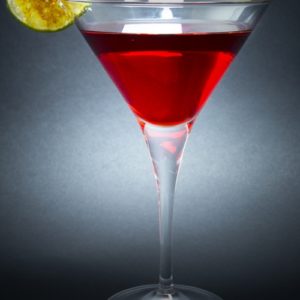Anyone enrolled in a culinary arts program can benefit from knowing a little bit about cocktails. After all, many successful restaurants build their reputation on bringing together perfectly matched meals and drinks. In recent years, however, some establishments have taken the partnership between beverage and meal that much farther, experimenting with hybrids that are now familiar aspects of the restaurant industry landscape. Learning more about culinary cocktails and edible cocktails may inspire you to take your own cooking skills in a boozy new direction:
What makes a cocktail culinary?
Culinary cocktails borrow ingredients and techniques from the kitchen in order to develop innovative new flavors. As Cool Hunting noted, progressive American restaurants are a major influence on bartenders or mixologists who spend days experimenting with various flavor combinations. Many specially prepare their own ingredients, like homemade bitters and infused liquors.This approach results in unique cocktails, crafted with care and appealing to customers who are bored of the same old cosmopolitan or Manhattan.
As the culinary cocktail trend spread across the country, mixologists took their drinks in many intriguing directions. Gabriella Mlynarczyk of the Los Angeles restaurant .ink offers an alternating menu of house cocktails that features items like vodka with carpano bianco, salers apertif, sencha, mint, cucumber and lime. At Chicago’s Acadia, beverage director Carlos Diaz mixes drink such as the Bee Still, consisting of lavender and orange-infused Corsair barrel-aged gin, honey, lemon and prosecco.
Some of the leading crafters of culinary cocktails are adept in molecular mixology – a close cousin to molecular gastronomy – emphasizing how beverages chemically transform during preparation and consumption. The bartenders at Booker and Dax in New York City specialize in spectacular displays involving flame and liquid nitrogen as they prepare drinks like the gin and juice, featuring clarified grapefruit juice, or the Thundernut with pistachio rum, Amaro, pineapple and adjusted orange juice. Charles Joly, beverage director of The Aviary in Chicago, told Where Traveler that his restaurant employs two full-time ice chefs charged with ensuring cocktails come with both spectacular presentation and perfect dilution.
The Atlanta Journal-Constitution reported that some dietary experts even consider the culinary cocktail a relatively healthy choice, at least when they are made with more produce than alcohol.
Rachel Begun, a spokeswoman for the Academy of Nutrition and Dietetics, said, “Cocktails made from fresh fruits, vegetables and herbs do deliver nutrients and are better options than drinks made from processed mixers both from a taste and nutrition perspective.”
Eating your cocktail
Edible cocktails might take the form of ice cream, such as the Velvet Elvis made with frozen vanilla custard and house-infused blackberry vodka at Liberty Kitchen in Austin. Alcohol-infused cupcakes are also widely available. Guilty Pleasurez in Chicago bakes varieties like Pink Lady, rum and Coke, and White Russian.
However, the most common type of edible cocktail is the jelly shot, which combines fruit flavors with alcohol and liqueur in shapes and sizes that are both convenient and attractive. According to the Los Angeles Times, the concept originated at the Bar du Plaza Athenee in Paris, which also serves alcoholic popsicles called Fashion Ice.
The Guardian reported that the edible cocktail trend has taken hold in England as well. At 69 Colebrook Row in London, famed mixologist Tony Conigliaro serves the Prairie Oyster: horseradish vodka with tomato yolk, Oloroso sherry, shallots, pepper sauce, celery salt and micro herbs. The yolk forms a film around the other ingredients, popping when placed in a patron’s mouth. Meanwhile, the Walled Garden Supper Club in Manchester crafts a gin and tonic meringue with juniper syrup and fresh lime juice.
The bar and kitchen are closer together than ever, as bartenders and chefs borrow techniques and ingredients from one another. Finding your own way to seamlessly mingle food and drink could be an important part of your culinary career.




